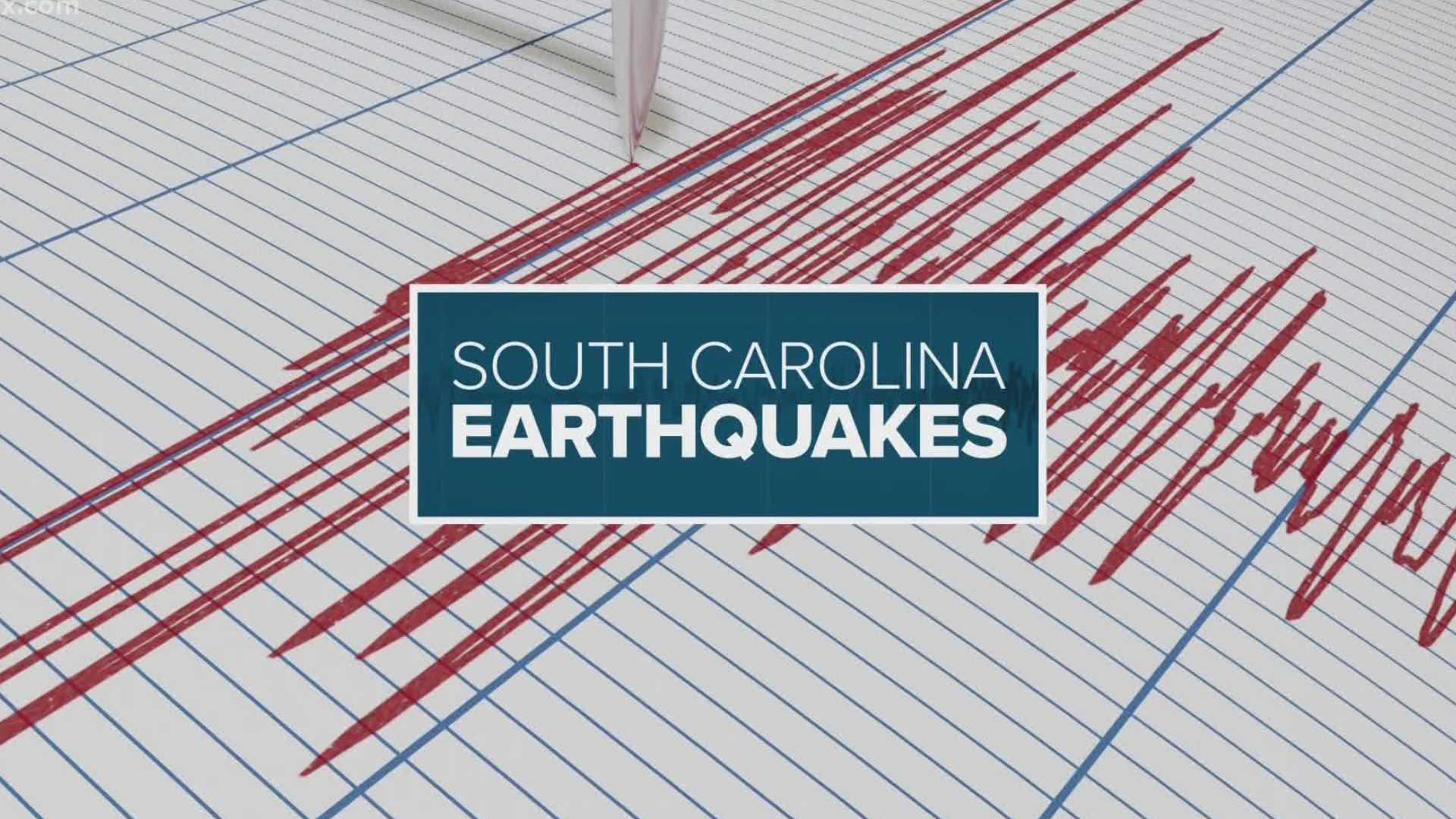COLUMBIA, S.C. — Although earthquakes cannot be predicted in the same way as the weather, the US Geological Survey (USGS) has released a report containing three possible scenarios related to the most recent earthquake swarm in Elgin.
A high number of quakes in the same area is called a "swarm." Since the 3.3 magnitude quake on December 27, 2021, there have been over 70 small earthquakes near the Kershaw County town. The largest earthquake, so far, has been the 3.6 magnitude earthquake on June 29.
During an earthquake swarm, the probability of larger earthquakes goes up as the number of quakes increases. The rate of small earthquakes allows USGS to estimate the probability of larger earthquakes.
USGS predicts three scenarios based on the data:
- Scenario 1: Most likely, about 95% chance. Earthquakes continue, but none larger than magnitude 4 within the next month. The rate of earthquakes is likely to remain the same, possibly decreasing over the next 30 days, or the swarm could stop completely.
- Scenario 2: Less likely, about 5% chance. A somewhat larger earthquake -- in the magnitude 4-5 range could occur. An earthquake measuring a magnitude of 4 would be felt over a larger area but would not cause significant damage. There would be a temporary increase of smaller earthquakes as aftershocks.
- Scenario 3: Least likely, about 1% chance. A much larger earthquake hits -- magnitude 5 or higher. USGS says while this is a very small probability, such an earthquake could have significant impacts on communities nearby and would be followed by aftershocks that would increase the number of smaller earthquakes per day.
The USGS and its partners in the Advanced National Seismic System (ANSS) are monitoring the earthquake sequence in South Carolina. USGS ANSS partners in the region are the Center for Earthquake Research and Information (CERI) at the University of Memphis and the University of South Carolina. A summary of the main features of the sequence is also included on the USGS event pages for the larger earthquakes in the sequence and at the South Carolina Department of Natural Resources (SCDNR).

